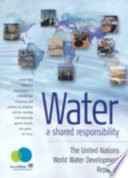 | Unesco, World Water Assessment Programme (United Nations) - 2006 - 600 pages
...applied, meaning that where there are threats of serious or irreversible damage to the environment, lack of full scientific certainty should not be used as a reason for postponing cost-effective measures to prevent environmental degradation (from European Environmental... | |
 | Rob Ord - 2006 - 247 pages
...environment, the precautionary approach shall be widely applied by States according to their capabilities. Where there are threats of serious or irreversible damage, lack of full 369 See also Hirsch, WZ Law and Economy: an Introductory Analysis (3rd Edn) (New York: Associated Press,... | |
 | Elizabeth Charlotte Fisher, Judith S. Jones, René von Schomberg - 2006 - 353 pages
...who should be involved in the decision-making process. Most formulations of the principle4 state that 'lack of full scientific certainty should not be used as a reason' not to take measures and as such they require the decision maker to depart from a norm that has tended... | |
 | Joseph F. DiMento, Pamela Doughman - 2007 - 233 pages
...measures to anticipate, prevent or minimize the causes of climate change and mitigate its adverse effects. Where there are threats of serious or irreversible...be used as a reason for postponing such measures, taking into account that policies and measures to deal with climate change should be cost-effective... | |
 | Mayer Hillman, Tina Fawcett, Sudhir Chella Rajan - 2007 - 316 pages
...measures to anticipate, prevent or minimize the causes of climate change and mitigate its adverse effects. Where there are threats of serious or irreversible...be used as a reason for postponing such measures" (Article 3.3). Precaution means that it is necessary to take steps to avoid climate change even if... | |
 | Michael Gerrard - 2007 - 796 pages
...parties. One of the Article 3 principles is the so-called "precautionary principle," which provides that where there are "threats of serious or irreversible...scientific certainty should not be used as a reason for postponing [precautionary] measures."9 However, such measures should be "cost-effective so as to ensure... | |
 | 2006 - 112 pages
...level, drawing on pertinent information and analyses at the subregional, regional and global levels. Where there are threats of serious or irreversible...scientific certainty should not be used as a reason for postponing cost-effective measures to prevent the degradation of the marine environment. C Setting... | |
 | Intergovernmental Panel on Climate Change - 2007 - 33 pages
...measures to anticipate, prevent or minimize the causes of climate change and mitigate its adverse effects. Where there are threats of serious or irreversible...scientific certainty should not be used as a reason to postpone such measures, taking into account that policies and measures to deal with climate change... | |
 | Tim Bonyhady, Peter Christoff - 2007 - 340 pages
...emissions, it was still adequate.53 The version of the principle that appears in NSW legislation is that: If there are threats of serious or irreversible damage,...scientific certainty should not be used as a reason for postponing measures to prevent environmental degradation.54 While Justice Pain held that the principle... | |
 | Ettore Capri, Dimitrios Karpouzas - 2011 - 266 pages
...the 1992 Rio Conference on the Environment and Development set out the 'Precautionary Principle' that 'Where there are threats of serious or irreversible...damage, lack of full scientific certainty should not be posed as a reason for postponing cost effective measures to prevent environmental degradation'. Subsequently,... | |
| |